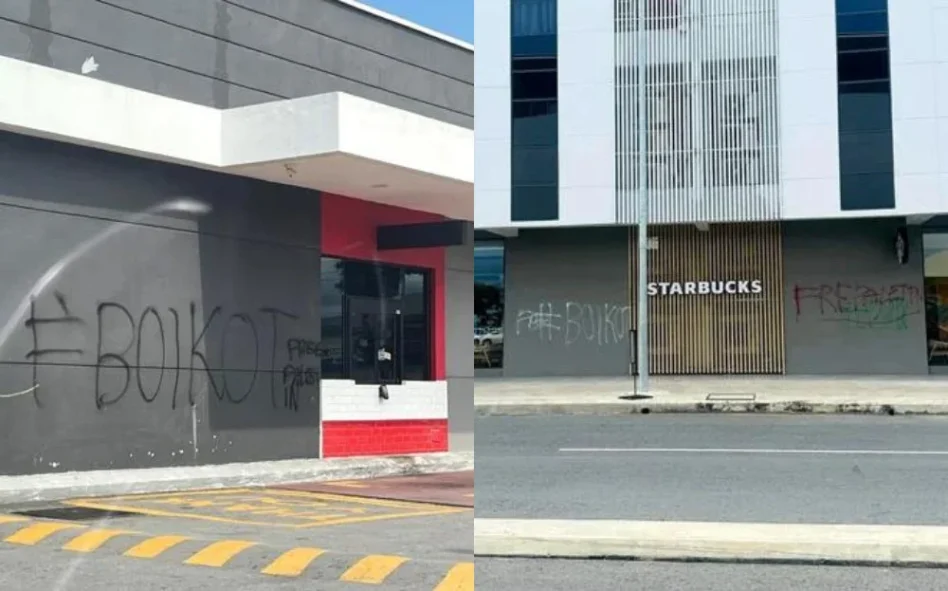ALTHOUGH the Government’s decision to finally implement a total lockdown is agreeable, some may believe that the period of the First Phase of the total lockdown should be extended.
In a statement released earlier today, EMIR Research president and CEO Rais Hussin voiced his support on the total lockdown call, but suggested a three-week period instead, in order to successfully bring down the country’s infection rate and the death toll, while also giving sufficient time for more testing and vaccinations to take place.
With that in mind, Rais also gave several suggestions that could be accompanied with the proposed three-week lockdown, which includes:

Three-month loan moratorium
The loan moratorium provided significant relief to people with disrupted incomes and allowed more cash in hand. The first six-month moratorium ended on Sept 30 last year and a measure that was well-received by the people was the high uptake of the subsequent six months “opt-in” moratorium.
When observing the income statements relevant during these periods (Q2 – Q3 2020 and Q2 – Q4 2020) for two major banks in Malaysia, Maybank and CIMB bank, although incomes were affected, both still registered significant profits.
But as observed from income statements, the moratorium’s impact appears to be more significant with Maybank than CIMB bank. Maybank observed about 40% in profit reduction (compared with the same period in the preceding year). This is due to lower interest income.
For CIMB Bank, the relatively larger reduction in profits appears to be mainly attributed to lower dividends received from its subsidiaries, partially offset by less loss on net interest expense. Net interest income does not appear to be a big profit contributor to CIMB Bank as it has been experiencing net interest expense (loss) since 2019.
Furthermore, we observe that once the moratorium has ended, based on financial standing in Q1 2021, the ease of recovery was evident, as Q1 2021 profits for Maybank have exceeded comparative periods in 2020 and 2019. Evidently, Maybank’s ability to “recover” in terms of profits, appears to be higher compared pre-moratorium quarters for 2020 and 2019 respectively.
While income is obviously affected, the costs for the banks have also generally reduced in line with the lower interest rates and Government assistance.

Reduction in profits due to moratorium is unfavourable from the commercial perspective, but when compared to other industries with severe losses, or with the people who have lost their sources of income entirely, the relative comparison is clear: Banks, subject to their investments and business profile, may have a relatively bigger capacity to weather the impact of the short-term moratorium.
Banks appear to have the capacity to weather the moratorium, with its participation directly assisting the people who are in need the most. The relative reduction in profits to the banks attributable to moratoriums is incomparable to the relative socio-economic harm to the people in the absence of a moratorium, especially during lockdowns.
Renter protection for at least two months
As some people or businesses may be owing to other individuals or organisations, i.e., not directly with banks (for example; with landlords), they too should be provided with a safety net through a form of renter’s protection for a minimum of two months during the proposed temporary lockdown.
This is also in line with the EMIR Research ground research findings immediately after the first complete lockdown.
At that time, the business owners reported that it is their inability to cover fixed costs due to dwindling incomes pushed them to the brink of survival. Unlike loan moratoriums, assistance to landlords is probably needed in the form of subsidies, ensuring that they too are not pushed to the point of survival. If data allows, targeted subsidies (for those landlords whose rental income is the sole source of income) is preferred.
Wage subsidies for three months
This is necessary to provide “breathing space” for business owners and employers, allowing for better workforce retention. Studies on the impacts of MCO 1.0 showed that 68% of businesses reported no sales/income during the period.
Due to the collective impact of this economic safety net for both businesses and individuals, wage subsidies should be considered for a minimum of three months. However, the wage subsidies should be limited only to private sector daily wage earners among the B40s.
Targeted direct cash transfer for two months to the B40s
As measured by the consumer price index (CPI) and reported by the Department of Statistics Malaysia, Malaysia’s inflation rose 4.7% year-on-year in April 2021 — four years high.
Since food is a necessity, the increase in prices is worrying for consumers. EMIR Research’s poll findings have shown that there is a high degree of worry towards socio-economic matters in 4Q 2020 due to the pandemic – losing jobs (81%), insufficient incomes (79%) – and the crisis has also led to another worrying consequence like mental health (75%).
Labour market uncertainty remains, and the people’s social safety net has also become more vulnerable. The unemployment rate went up by 0.1 percentage point to 4.8% in 4Q 2020, with a higher number of unemployed at 760,700.
In tackling cost-of-living matters, the rakyat should be supported with at least basic necessities to survive on a daily basis given the high number of COVID-19 infections and the impact of lockdowns, where additional cash aid to the needy should be considered.

Therefore, an expansion in beneficiary coverage should be considered for eligible B40 households, especially for daily wage earners and gig economy workers.
Revamp current process for SOPs
There is an urgent need to tighten current SOPs and monitor adherence diligently. There is probably even a need to revamp some of the current SOPs.
One critical area that Malaysian epidemiologists and exposure science specialists must give the most scrupulous attention to is vaccination centres that must continue to operate even under the complete lockdown.
Given the accumulated empirical evidence pointing to the high possibility of airborne nature of COVID-19 transmission, current SOPs may need to be revised accordingly:
- Consider making high efficiency masks compulsory in the vaccination centers as well as encourage wearing other protective wear for those who are vaccinated.
- Consider utilising highways or parking lots for organising drive through vaccination centres.
- For vaccinations requiring indoor settings, ventilation, air filtration and purification technologies is a must, with adequate capacity for the venue.

Crystal clear communication to all
There should be a coordinated effort to ensure clear, streamlined and non-conflicting information is provided to the people, to provide directives in advance.
The messaging has to be positive in tone, and not merely outlining what can and cannot be done, but also by providing the reasoning based on science and hard data, through an effective communication style suitable for the masses.
Increase capacity and speed for testing through Federal- State Governments’ cooperation
Although lockdowns can be considered a short-term “circuit-breaker”, it is crucial to detect and isolate carriers in the community. Without a mass testing and isolation programme to match short-term lockdowns, these carriers re-join the community once movement restrictions are relaxed, sporadically igniting clusters and cumulatively triggering the next wave.
Therefore, it is crucial to increase the testing capacity via updated test kits (valid for the latest variants) and the necessary infrastructure and manpower. Isolated asymptomatic cases must be adequately quarantined and re-tested before their release from individual quarantine.
Contact tracing system that enables data sharing amongst critical stakeholders
Current and future resources must be allocated to ensure the safety and integrity of data quality gathered by apps such as MySejahtera, and ensure transparency in complete data sharing between all stakeholders at the Federal and State level.
This benefits predictive technologies such as the Hotspots Identification for Dynamic Engagement (HIDE).
Vaccinate as many people possible through collaborative efforts between Fed and State Gov’ts
For the vaccine supplies already available, it is critically important to vaccinate the registered recipients even ahead of scheduled time—the above-mentioned drive through arrangements might facilitate this strategy.

Enable public private partnership, empower general practitioners (GPs)
Instead of mass hiring under the Health Ministry to supplement the needs of an additional workforce, it is worth considering empowering existing medical practitioners in the private sectors and general practitioners (GPs).
According to a statement by the president of The Federation of Private Medical Practitioners Associations, there are at least 8,000 GPs in Malaysia and assuming each GP treats 10 to 20 symptomatic patients daily, thousands of early cases of COVID-19 can be attended to. This reverts back to the role of GPs as gatekeepers of the healthcare system, prior to access to more intensive care at hospitals.
No politics. Just focus on the pandemic and economic management for all.
Malaysia has arguably reached a point where the argument tips significantly in favour of saving lives. The issue transcends all political narratives. There are no justifiable grounds to politicise any part of this pressing matter.
This is a national security issue, and it calls for a political sabbatical, where all sides of the political divide must show solidarity to address this national crisis. – May 29, 2021.










